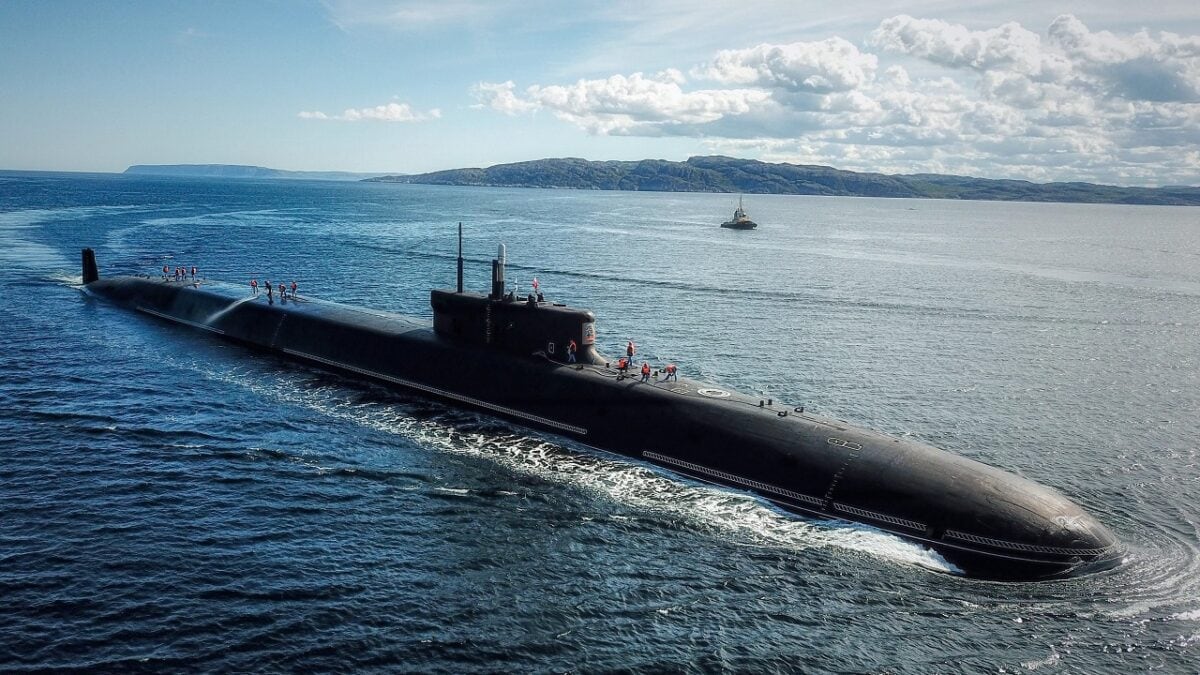Russia’s ballistic missile submarines are among the most powerful weapons on Earth: Despite Russian President Vladimir Putin‘s claims in last week’s over-the-top rally in Moscow last week that the “special military operation” in Ukraine was going as planned, there are clearly signs that officials in the Kremlin may be worried that Russia could find itself on the defensive.
Kremlin spokesman Dmitry Peskov said recently in an interview that Russia would only use nuclear weapons if its very existence were threatened, but Moscow’s deterrence strategy could be further elevated – and the Russian Navy’s ballistic submarines could play an even bigger role in that deterrence.
This month the giant Sevmash yard in the north Russian city of Severodvinsk is preparing two newly launched submarines for sea trials in the White Sea. Among those is the Generalissimo Suvorov, the sixth vessel of Russia’s fourth-generation ballistic missile submarines and the third of the upgraded Borei-A class. The commissioning and hand-over to the Russian Navy, following the completion of the sea trials, is now scheduled to take place before the end of December.
“This is our strategic argument. Nuclear submarine cruisers are protecting our country,” Russian Navy Commander-in-Chief Nikolai Evmenov said at the Dec. 2021 launch ceremony for the Generalissimo Suvorov. “The country has not commissioned this many ballistic missile submarines since 1991.”
Despite Russia’s current economical meltdown, which followed international sanctions after it launched its unprovoked and unwarranted invasion of Ukraine, efforts are still underway to continue the production at the Sevmash shipyard. Officials have said they will follow the orders of President Putin to “increase the pace renewal of the Navy, build modern surface and submarines of various designs and classes.”
There are currently four additional Borei-class ballistic missile carriers to be floated out in Severodvinsk by 2029 when the class will become the backbone of Moscow;s sea-based nuclear deterrence. The Borei-class will replace the aging Delta-IV and Delta-III submarines currently sailing deterrence patrols.
Russia’s Borei: Top of the Class
The Borei-class was the first class of submarines developed by Russia after the Soviet era. The first submarine of the class, Yury Dolgoruky, was laid down in November 1996 but was delayed due to budget constraints and only launched in February 2008. The boat officially entered service with the Russian Navy in January 2013.

Borei-class Submarine.
The class of submarines has also been significantly improved as the Project 995A strategic missile-carrying submarines, which are reported to be quieter and also feature improved maneuvering, depth and armament control systems. The boats are also less detectable to sonar than its predecessors, while other advancements include a pump jet propulsion – and Project 995AS is the first Russian submarine with such a propulsion system.
The lead submarines of the improved class, Knyaz Vladimir, entered service with the Russian Navy in June 2020 – while the first serial produced Borei-A strategic nuclear-powered ballistic missile submarine Knyaz Oleg was floated out the following month. These boats are equipped with either one or two towed sonar arrays stored in tubes inside the vertical rudders that retract inwards. Moreover, there is also a noticeable bulge running alongside the hull for much of its length, which is likely a ‘flank’ sonar array. This array could allow the Borei-A-class to ‘see’ into the ocean with sonar in both the port and starboard directions.

Russia’s Borei-class ballistic missile submarine.

Russia’s Borei-class Ballistic Missile Submarine. Image Credit: Creative Commons.
Each of the submarines is armed with sixteen Bulava ballistic missiles, a three-stage solid-propellant sea-launched variant of the Topol-M, which has a range of over 8,300 kilometers. The missiles can reportedly be fitted with six to ten nuclear multiple warheads yielding 100 to 150 kilotons apiece. In addition, the Bulava can be equipped with 10 to 40 decoy warheads.
The Project 995A submarines are also furnished with 533mm torpedo tubes.
As with the nuclear-powered ballistic missile submarines (SSBNs) operated by the United States, China, France, the United Kingdom, and India, the primary purpose of the Borei/Borei-A-class is to bring ruin to an adversary’s cities, even if other nuclear forces are whipped out in a first strike. This is why the Russian Navy has sought to make the Bulava-equipped Borei underwater cruisers the cornerstone of its nuclear submarine-launched ballistic missile deterrent force for decades.

Russian Navy Borei-class. You Tube Screenshot.
Now a Senior Editor for 1945, Peter Suciu is a Michigan-based writer who has contributed to more than four dozen magazines, newspapers and websites. He regularly writes about military hardware, and is the author of several books on military headgear including A Gallery of Military Headdress, which is available on Amazon.com. Peter is also a Contributing Writer for Forbes.

